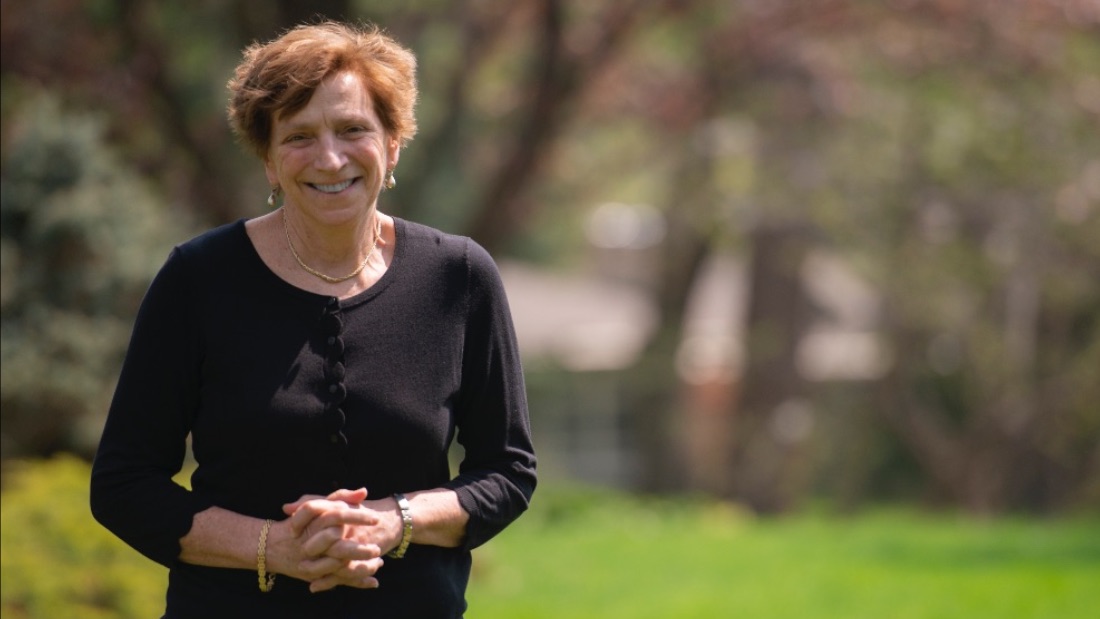
This summer will usher in substantial transition for the University of Wisconsin Department of Pediatrics as the Medical Director of both the Pediatric Comprehensive Bleeding Center and the Pediatric Comprehensive Sickle Cell Center, the Director of Coagulation, an associate professor, and a 10-year academic career advisor and mentor exit the department. This extensive changing of the guard will follow the July 5 retirement of Carol A. Diamond, MD, associate professor, Hematology, Oncology and Bone Marrow Transplant, as she hands off her multiple responsibilities to new and capable pediatricians ready to carry on the work.
Diamond began her career at the University of Wisconsin–Madison’s School of Medicine and Public Health (SMPH) as an assistant professor of pediatric hematology and oncology in 1999. She had already served in several pediatric capacities with the University of California–San Francisco and for Kaiser Permanente Medical Centers from 1991 to 1999. Thus, when she arrived at SMPH, she brought nearly a decade of experience in the complex world of childhood blood disorders and cancer. She became director of two related clinics at American Family Children’s Hospital: the Pediatric Comprehensive Bleeding Center and the Pediatric Comprehensive Sickle Cell Center.
During her undergraduate education at the University of California—Santa Cruz, Diamond studied English literature and biology. “I took my time deciding what I wanted to do,” noted Diamond. “Medicine wasn’t a clear choice for me until mid-way through my undergraduate degree. I’ve always liked stories, so English literature was a natural choice—in retrospect, also relevant to medicine.”
At the Chicago Medical School, that same circumspect approach characterized Diamond’s selection of specialty—she had not begun with the intention of pursuing pediatrics. “It wasn’t until my last rotation in my third year of medical school that I was properly introduced to pediatrics,” recounted Diamond. “It was instantaneous: I was hooked. I knew that this field would engage me completely, both intellectually and emotionally.”
Her pediatric residency and subsequent fellowship in pediatric hematology and oncology at Moffitt-Long Medical Center in San Francisco clarified and strengthened her intention. In 1991, Diamond became assistant clinical professor of Pediatric Hematology/Oncology at the University of California–San Francisco, and residency site director for the pediatrics residency training program.
Throughout her years as clinician, advisor, mentor, and teacher, her early assessment of pediatrics has proven to be true again and again. “Growth and development is endlessly fascinating,” explained Diamond. “In this field, one gratifying aspect is the longitudinal care—the long view we are allowed to take in, seeing those we often met as infants grow into children and teenagers, and helping as we can the families adjust to every change.”
Those changes have often required that Diamond employ the full arsenal of knowledge and skills of her specialty. Identifying and treating childhood blood disorders and other cancers is the primary focus of Diamond’s practice. It is perhaps here that the full meaning of her characterization of the field as one that challenges and nurtures both mind and heart reveals itself. Hemophilia, lymphoblastic leukemia, neuroblastoma: these are only a few of the potent, dire, and possibly mortal conditions that Diamond faced in her young patients. The work was intense and stressful: there were seeming miraculous successes and devasting losses. All this Diamond acknowledged. However, after more than three decades in the fray, she expressed, above all, deep gratitude: “I was lucky to have the privilege of working with incredible people; the partnership and support of our team was always committed and unfaltering. I believe that in extremity, in these situations where people faced the worst they could imagine, I experienced the best in people, from the staff and from the families. I have nothing but gratitude for being given the opportunity to do this work.”
Diamond also conducted research herself and with larger teams for 34 years, with 30 refereed articles published between 1988 and 2022. The most recent publication, a radiation therapy case study, appeared in Advances in Radiation Oncology on May 1, 2022. Diamond received an award for her early pediatric research. In addition, she has been honored with at least six awards for teaching excellence, the 2021 Leonard Tow Humanism in Medicine Award, and others.
When word spread of her retirement, a University of Wisconsin–Madison academic staff member and mother of one of Diamond’s small patients from six years ago offered a tribute:
When my daughter was diagnosed with neuroblastoma at the age of two, she was just old enough to sing nursery rhymes like “Twinkle, twinkle, little star.” Dr. Carol Diamond was our primary oncologist and North Star, guiding us though our darkest days. It’s no wonder my daughter changed the words to say,
Twinkle, twinkle, little star, / how I wonder what you are!
Up above the world so high, / like Doc Diamond in the sky.
Ellen Wald, MD, Alfred Dorrance Daniels Professor on Diseases of Children and chair of the Department of Pediatrics, bestowed on her the highest praise: “Dr. Carol Diamond has been an exceptionally effective and visionary leader, a deeply knowledgeable, dedicated, and compassionate clinician, and an energetic and innovative teacher. We are all grateful for the years we have worked with her.”